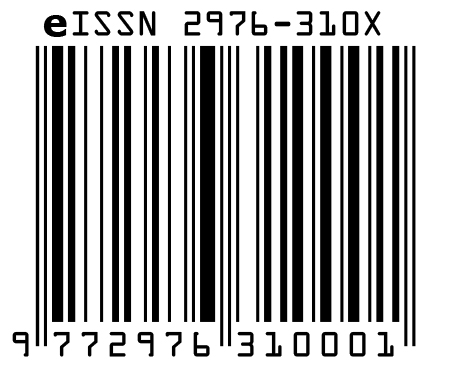Examining the Effectiveness of Using Rhymes on Improving the Learning of Multiplication Times Tables in Year 3 Students in Dubai
DOI:
https://doi.org/10.60072/ijeissah.2024.v3i01.004Abstract
This study investigates the effectiveness of using rhymes to enhance the learning of multiplication timetables among Year 3 students at The Westminster School in Dubai. A total of 66 students were selected and divided into two groups: an experimental group and a control group, each comprising 33 students. Over three weeks, the experimental group learnt the 3, 4, and 8 times tables through specific rhymes—"Row Row Row Your Boat" for the 3 times table, "Twinkle Twinkle Little Star" for the 4 times table, and "This Old Man" for the 8 times table. The control group received traditional instruction without rhymes. The study utilised a pre-test and post-test design to measure the student’s ability to recall multiplication facts before and after the intervention. The outcomes were quantitatively analysed through an independent two-sample T-test and assessed the mean differences in learning outcomes between the control and experimental groups. The results indicated that using rhymes significantly improved the student's understanding and retention of multiplication facts. Students in the experimental group exhibited higher levels of engagement, enthusiasm, and motivation compared to the control group. This increased engagement was reflected in their improved performance on multiplication tests. The findings suggest that incorporating rhymes into mathematics instruction can be a highly effective strategy for teaching multiplication tables, fostering both cognitive and affective gains in students.
Keywords:
Mnemonic Devices, Multiplication Tables, RhymesReferences
Bellezza, F. S. (1981). Mnemonic devices: Classification, characteristics, and criteria. Review of Educational Research, 51(2), 247-275. DOI: https://doi.org/10.3102/00346543051002247
Boaler, J., Williams, C., & Confer, A. (2015). Fluency without fear: Research evidence on the best ways to learn math facts. Reflections, 40(2), 7-12.
Bower, J., Magee, W. L., Catroppa, C., & Baker, F. A. (2021). The neurophysiological processing of music in children: A systematic review with narrative synthesis and considerations for clinical practice in music therapy. Frontiers in psychology, 12, 615209. DOI: https://doi.org/10.3389/fpsyg.2021.615209
Chen, Z., Siegler, R. S., & Daehler, M. W. (2000). Across the great divide: Bridging the gap between understanding of toddlers' and older children's thinking. Monographs of the Society for Research in Child development, i-105.
Chen, Z., & Siegler, R. S. (2000). Intellectual development in childhood. DOI: https://doi.org/10.1017/CBO9780511807947.006
Coble, K., Kalamkovic, M., Markovic, S., & Ristovski, R. POSSIBILITY OF USING NEW TYPES OF MUSICAL ELECTRONIC INSTRUMENTS FOR ASSISTIVE TECHNOLOGY. DOI: https://doi.org/10.2298/MICP2012325C
Cunningham, A. E., & Stanovich, K. E. (1997). Early reading acquisition and its relation to reading experience and ability 10 years later. Developmental psychology, 33(6), 934.
Damashek, A. L., & Chaffin, M. J. (2012). Child abuse and neglect. Handbook of Evidence‐Based Practice in Clinical Psychology, 1. DOI: https://doi.org/10.1002/9781118156391.ebcp001028
Five Reasons That Your Students Aren’t Mastering The Multiplication Facts (and what you can do about it). (2019, February 15). Shelley Gray. https://shelleygrayteaching.com/five-reasons-students-arent-mastering-multiplication-facts-can/
Hallam, S. (2010). The power of music: Its impact on the intellectual, social and personal development of children and young people. International journal of music education, 28(3), 269-289. DOI: https://doi.org/10.1177/0255761410370658
Hernandez-Ruiz, E. (2019). How is music processed? Tentative answers from cognitive neuroscience. Nordic Journal of Music Therapy, 28(4), 315-332. DOI: https://doi.org/10.1080/08098131.2019.1587785
Hetland, L. (2000). Learning to make music enhances spatial reasoning. Journal of aesthetic education, 34(3/4), 179-238. DOI: http://dx.doi.org/10.2307/3333643
Kling, G., & Bay-Williams, J. M. (2015). Three steps to mastering multiplication facts. Teaching Children Mathematics, 21(9), 548-559. DOI: https://doi.org/10.5951/teacchilmath.21.9.0548
Knott, D., & Thaut, M. H. (2018, May). Musical mnemonics enhance verbal memory in typically developing children. In Frontiers in Education (Vol. 3, p. 31). Frontiers Media SA. DOI: https://doi.org/10.3389/feduc.2018.00031
Macmillan, B. M. (2002). Rhyme and reading: A critical review of the research methodology. Journal of Research in Reading, 25(1), 4-42. DOI: https://doi.org/10.1111/1467-9817.00156
Miller, S. P., Stringfellow, J. L., Kaffar, B. J., Ferreira, D., & Mancl, D. B. (2011). Developing computation competence among students who struggle with mathematics. Teaching Exceptional Children, 44(2), 38-46. DOI: https://doi.org/10.1177/004005991104400204
Montag, J. L., Jones, M. N., & Smith, L. B. (2015). The words children hear: Picture books and the statistics for language learning. Psychological science, 26(9), 1489-1496. DOI: https://doi.org/10.1177/0956797615594361
Nurhudayah, N. (2018). The Effectiveness of Teaching Vocabulary by Using Nursery Rhymes to The First Grade Students at MTs DDI Pattojo Soppeng. Undergraduate Paper, Universitas Islam Negeri Alauddin Makassar.
Orr, J., & Pearce, K. (2020). PD For Your Earbuds: Making a Math Moments That Matter Podcast. Mathematics Teacher: Learning and Teaching PK-12, 113(5), e5-e6.
Owens, P., & Sweller, J. (2008). Cognitive load theory and music instruction. Educational Psychology, 28(1), 29-45. DOI: https://doi.org/10.1080/01443410701369146
Vaughn, K. (2000). Music and mathematics: Modest support for the oft-claimed relationship. Journal of aesthetic education, 34(3/4), 149-166. DOI: https://doi.org/10.2307/3333641
Wiggins, G. A. (2007). Models of musical similarity. Musicae Scientiae, 11(1_suppl), 315-338. DOI: https://doi.org/10.1177/102986490701100112
























